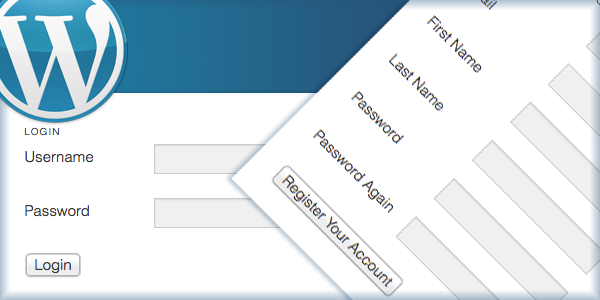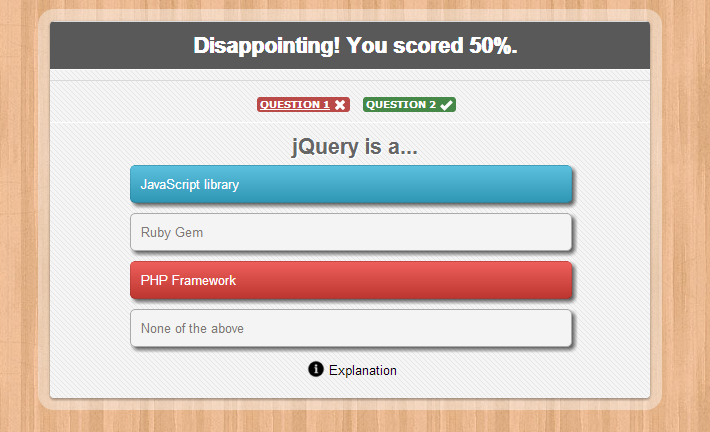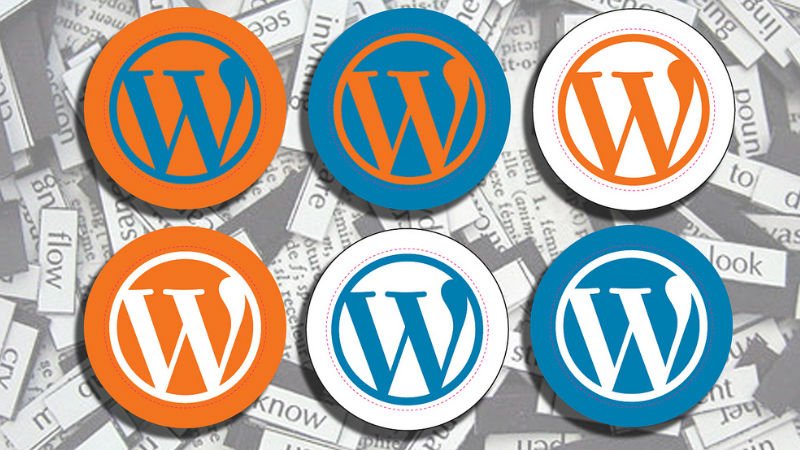
WordPress Glossary Terms–Episode 6
Every beginner blogger knows how tough this whole WordPress thing can be sometimes. Even though WordPress is commonly known as the easiest CMS to use and blogging platform, there are still many things about it that need to be explained. Are you puzzled by strange WordPress terms or abbreviations? Are you looking for a WordPress dictionary that explain these WordPress terms in plain english? Then you are at the right place. Below you can see short descriptions for basic terms related to WordPress.
Featured Image
The Featured Image (also known as post thumbnail) is a WordPress theme feature which allows theme developers to add support for using a representative image for posts, pages, or custom post types. Even though Featured Image is the official term of this WordPress feature, some functions and template tags still use the term post thumbnail. Even the WordPress Codex page about featured images is still titled Post Thumbnails.
Theme authors can add featured image support into their themes by adding a simple snippet into their theme’s functions.php file. They can also configure how to handle image uploads by WordPress. They can choose thumbnail sizes, style them, and selectively turn the display of featured images ON and OFF. For example, manyWordPress photography themes use featured images in their layout. Another usage example of this feature is WordPress powered news and entertainment websites which use thumbnail images with each article on their front page. Where and how the image displays will differ from website to website. Part of the motivation behind changing the name from “post thumbnail” to “featured image” was the fact that “post thumbnail” didn’t fully describe the customizability of this representational image. You can see featured images being used on WPBeginner’s homepage and archive pages.
Users can upload these images directly by clicking on the “set featured image” link in the Post Edit screen. Theme authors can also set a default image to be displayed when no image is found. If you cannot find the “set featured image” link make sure that it is enabled under screen options in the top right of the admin panel.
Filter
In WordPress, filters are functions that can be hooked to an event (called hooks). During the execution when the event is triggered the filter is applied to the data output generated by the event hook. It is important to remember that filters perform their actions on data they receive and then return that data before it is displayed in the browser. Filters always have to have data coming in and data going out to ensure the data is output in the browser (your content may be passed through other filters before getting output in the browser). By comparison, actions, which are similar to filters, do not require that anything be returned, although data can be returned through actions as well.
Footer
The term Footer usually refers to the bottom section of a web page in the web design terminology. It usually contains information like copyright notices, links to privacy policy, credits, etc. It may also contain code and scripts that a WordPress theme developer would want to include in the page but after loading the rest of the page content.
In WordPress theme development, the footer area of a website is usually defined in the template file footer.php. In some themes, the area may also contain a widgetized area with multiple columns that you can use to add WordPress widgets.
Since the footer generally stays the same across the entire website, the elements in the footer are usually items that are relevant to the site as a whole and not specific to any single section. With the development of HTML5, however, the concept of a “footer” and a “header” have been expanded. Due to HTML5’s method of semantically marking up pages, the “footer” element can now be used not just for the web page as whole, but even within the the various sections of the webpage. This means that some web pages these days may have numerous “headers” and “footers”. Do not let this confuse you though. On WPBeginner when we refer to the “footer” we are referring to bottom section of the webpage that appears consistently across your entire site. Within the WordPress community this is generally how the term footer is used as most WordPress sites have one head section and one footer section.
GitHub
GitHub is a project hosting service online. It is free to use for Open Source projects, and there are also paid plans available for private projects. Currently, GitHub is the most popular code-hosting service among open source developers and programmers. It uses Git version control system, hence the name GitHub.
A project hosted on GitHub is called a repository. Any one can signup for an account on GitHub and create their own repositories. Github users can add other users to their project for collaboration.
For Open Source projects, GitHub allows users to fork other open source projects as a new repository and work on it on their own. Open Source developers use this to submit patches and contribute their own code to other open source projects. The project owner or user with the capability to accept those changes can then accept those patches.
Many WordPress developers use GitHub to host their projects. There are currently many WordPress plugins and themes developed using GitHub as the code hosting platform. This allows WordPress developers to collaborate in teams, get feedback, allow others to review their code, and even download and use it.
Apart from being just a project hosting service, GitHub is also a large social networking site for developers and programmers. It allows users to follow each other, subscribe to updates from projects, like them by giving them a star rating, etc. These features allow users to receive updates for the projects they are interested in or stay in touch with coworkers and collaborators.
GitHub is not just used for programming and software development. It is also used by many other types of projects. For example, open source manuals, documentation projects, learning resources and other projects where users can collaborate online and work together.
Bitbucket is an alternative of GitHub.
GPL
GPL or General Public License, sometimes also called GNU GPL, is the most commonly used free software license. It was written by Richard Stallman of Free Software Foundation for GNU Project. This license allows software to be freely used, modified, and redistributed by anyone. WordPress is also released under the GPL license, which means that WordPress is an open source software that can be used, modified, and extended by anyone.
The WordPress project considers GPL license to be its philosophical equivalent of the bill of rights. It provides the core basic values that the project believes in.
- Anyone can download and run the software
- Anyone can modify it
- Anyone can redistribute free copies of the software
- Anyone can distribute modified versions of the software.
One of the primary aspects of the GPL is that it uses something known as copyleft. Copyleft is a play on the word copyright, but the concept is very similar. Basically it uses copyright law to protect modified versions of a work but requires the same protections to be applied to those versions. For this reason any work based on WordPress inherits the GPL license. This has caused some controversy as some companies and individuals tried to sell WordPress Themes and Plugins under non-compliant licenses. However, there is a strong sentiment among the community to protect the WordPress bill of rights. The WordPress project co-founder Matt Mullenweg is very vocal about it.
Hooks
In WordPress theme and development, Hooks are functions that can be applied to an Action or a Filter in WordPress. Actions and Filters in WordPress are functions that can be modified by theme and plugin developers to change the default WordPress functionality.
Functions used to modify Actions/Filters in WordPress can be hooked into WordPress. However, it is important to note that actions and filters are not the same thing. Actions are functions performed when a certain even occurs in WordPress. Filters allow you to modify certain functions. Arguments used to hook both filters and actions look the same. But they are different in functionality and how they behave.
.htaccess
The .htaccess file is a configuration file read by the server. It is able to override many server configuration settings and can be used for authorization, cache control, website optimization, and URL rewriting.
In WordPress, the .htaccess file is used most commonly for rewriting URLs, making them cleaner, and more readable by humans and search engines.
In the Settings > Permalinks section of the WordPress Administration, you have the option to select your URL structure. WordPress will automatically rewrite your .htaccess file to handle the URL structure you select.
If WordPress is unable to write to the file, it will ask you to do it manually. Manually editing the .htaccess file is risky, as it can cause major server errors if configured incorrectly, so be sure to only copy the contents WordPress advises you to.
Plugins such as W3 Total Cache will modify your .htaccess file in order to configure the caching and optimization tools that are part of the plugin.
The .htaccess file is usually found in the root directory of your WordPress site. Your FTP client may not be able to show it, as by default all files and directory names starting with a period are considered hidden by the server. To view these hidden files you need to enable show hidden files option in your FTP client.
Home Page
The term home or home page is used in web development to refer to the the main page of a web site. It is often used in the navigation menus and other user interface elements of the website to direct users to the main page. By default, a WordPress website shows a home page with your latest posts listed in reverse chronological order.
Users can, however, choose to use a static page as their custom home page. This can make the website feel less like a blog and more like a fully featured website. Many users will choose to do this if they want to have their blog restricted to one section of the website.
There are several ways to modify your homepage or create a static front page. The first way is to either create a front-page.php file or a home.php file. Normally WordPress will serve your index.php file on the homepage. Before serving yourindex.php file WordPress will check to see if you have a front-page.php file. If you do, then it will serve this one instead. If you don’t have a front-page.php file, then WordPress will check to see if you have a home.php file before reverting toindex.php.
The second way to modify your home page is to create a regular WordPress page in your admin panel. From Settings » Reading, you can select the name of the page you just created to be your homepage. You can also choose another page contain your blog posts.
Other terms used to refer to the home page are front page, main page, and main index page.








